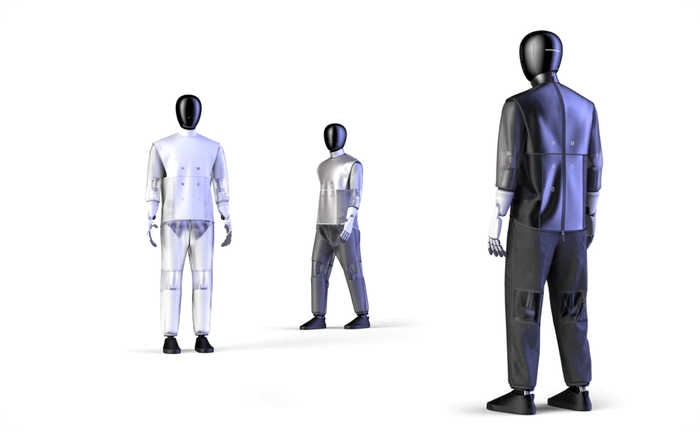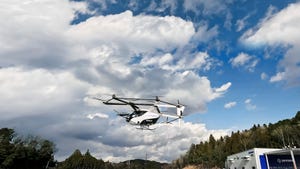Olympic Timekeeping Goes High-Tech With Emerging TechnologiesOlympic Timekeeping Goes High-Tech With Emerging Technologies
Omega will provide 350 tons of advanced timekeeping equipment to the Paris Games, including an array of sensors and computer vision cameras

Swiss watchmakers Omega, the official timekeepers of the Olympic Games since 1932, will revolutionize the Paris 2024 Olympics with cutting-edge technology, including AI-driven computer vision cameras.
Omega will bring 350 tons of equipment to Paris to keep track of times during the event. Some 550 official timekeepers and on-site professionals will work across the 32 sports with support from 900 trained volunteers.
Omega has outfitted its timekeeping solutions with an array of sensors.
Specially designed starting blocks for runners have built-in sensors that measure an athlete’s force against the footrest 4,000 times per second. The integrated sensors feed the data to an on-site computer, informing race officials of potential false starts by up to a tenth of a second.
The 2024 Paris Olympics will feature the increased integration of computer vision technologies.
Powered by a combination of AI and smart cameras, Omega will deliver detailed information on athletes’ movements and performance directly to judges.
At the Olympic Games, Omega not only handles timekeeping but also extends its technology to the Paralympic Games, which it has supported since 1992 using the same equipment as the Olympic Games. Omega will make additions to its timekeeping equipment to meet the specific requirements of Paralympic sports.
“Paris 2024 will highlight Omegas’s next leap forward in the field of modern timekeeping,” according to an announcement from Swatch Group, Omega's parent company. “Raising the standards of precision and performance, the brand will not only measure the results that separate gold, silver and bronze but will also unleash a wave of in-depth data that shows exactly how each event is won or lost.”

Credit: Omega
Here’s a look at some of the technologies Omega will be using at the 2024 Olympic Games:
Scan O’Vision ULTIMATE Photo Finish Camera: Debuting at the Paris Games, this smart camera can capture up to 40,000 digital images per second. Deployed at the finish line of races, the Scan O'Vision camera will help judges decide race results, providing detailed views of close finishes.
The camera produces a composite photo of every athlete crossing the line, determining the official results in athletics events and track cycling.
.avif?width=700&auto=webp&quality=80&disable=upscale)
Credit: Omega
Computer Vision: Omega has embedded computer vision technologies into its timekeeping arsenal across the games. Through multi-camera systems, AI models specifically trained for each sport provide detailed tracking of athletes and objects.
In volleyball, high-definition cameras installed around the court will capture data on athletes, eliminating the need for players to wear sensors. These cameras can detect if a ball has left the court and track player movements, generating detailed information on speeds, techniques and jump heights. This data can support judges' decisions and enhance the viewing experience for television audiences by providing fans with comprehensive and detailed information.
.webp?width=700&auto=webp&quality=80&disable=upscale)
Credit: Omega
Computer vision technology will also be used in tennis events, to track the players, rackets and the ball in real time and the pole vault to precisely measure the gap between the athlete and the bar.
It will also be used in diving where a suite of cameras combined with AI and mathematical algorithms working together to generate a 3D version of the diver in the air. It will provide metrics such as airtime and speed into the water which will be sent to judges to help review the quality of a performance.

Credit: Omega
Vionardo Graphics Technology: New graphics technology will also be on display in Paris. Omega’s Vionardo software displays graphics in 4K ultra-high definition for TV content and live broadcasts.
In Paris, Omega will use the graphics for each sport at the venues, and broadcasters will also have access to them. Vionardo can be used remotely, which Omega says minimizes the infrastructure footprint at competition venues.

Credit: Omega
Swimming Touchpads: Omega has designed smart touchpads for Olympic swimming events. They are designed to allow swimmers to “stop the clock” by exerting pressure on the pads sending the time information to the timekeepers.
Quantum Timers: Gone are the days of handheld stopwatches. In Paris, Omega will be using its quantum timers designed to be accurate to a millionth of a second. The timers feature on-board memory buffers to ensure accuracy, with timer data transmitted to on-site computers through USB.
Electronic Starting Pistols: Unlike traditional hand pistols, this innovative device connects to the stadium's speakers. When the trigger is pressed, a sound is emitted, a light flashes and a start pulse is sent to the timing device. This design ensures that competitors in all lanes, regardless of their distance from the pistol, can clearly hear the start signal.
Scoreboards: Omega has designed hi-resolution scoreboards that display an array of information, including athlete pictures and related imagery, which is then animated making for a more visual display.
Read more about:
2024 Paris OlympicsAbout the Author
You May Also Like
.jpg?width=100&auto=webp&quality=80&disable=upscale)
.jpg?width=400&auto=webp&quality=80&disable=upscale)





